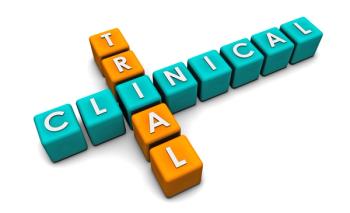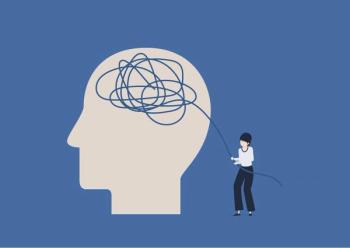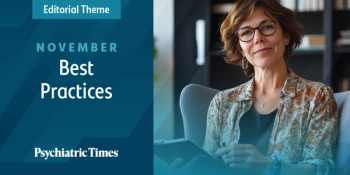
The Strength and Value of Organized Psychiatry
Here’s how the American Psychiatric Association and the American Academy of Psychiatry and the Law provide valuable opportunities for psychiatrists and the psychiatric field.
PSYCHIATRIC COMMUNITIES
Is organized medicine really on the decline? As more nursing and other allied organizations are growing and becoming more politically active, what is happening to membership in physician organizations? Given the increasing stressors of the COVID-19 pandemic, gun violence, physician wellbeing, rising health care costs, the scope of practice issues, and government intrusion on medical decision making, this is a time when physicians, the field, and our patients need help more than ever. Is there still strength in numbers?
According to the 2018 Survey of America’s Physicians: Practice Patterns and Perspectives, 80% of physicians were at full capacity or overextended, and 78% sometimes or always experienced burnout.1 The COVID-19 pandemic has only worsened these statistics. One 2021 study reported that rates of US physician burnout during the first year of the pandemic increased over time among 4 of 5 frontline specialties, with the greatest increases among hospitalist and primary care respondents.2 Organized medicine and specialty organizations are key pillars of support for individual physicians that provide opportunities to advocate for more funding and resources for our medical system and education.
In the 1950s, about 75% of all practicing physicians in the United States were members of the American Medical Association (AMA).3 According to a December 2016 article by Mother Jones online, AMA membership was representative of about one-sixth of the nation’s physicians.4 Subsequently, the AMA has intentionally worked on representing its members and patients through strategic work on 3 core pillars of advocacy, innovation, and equity, which has helped fuel 10 consecutive years of membership growth with a 35% cumulative increase in members from 2011 to 2021.5 What is happening with psychiatry?
The American Psychiatric Association
Each year when the American Psychiatric Association (APA) membership dues come into members’ inboxes, there are always complaints about the ever-increasing price of membership. With practice expenses and conference fees, along with membership dues, we again ask ourselves, “Why are we APA members? What are we paying for?” The question comes up year after year. APA membership showed a 14% growth from 2013 to 2018,6 but most recently membership count through year-end 2020 declined 3.6% from the previous year, from 38,799 to 37,420 (
Of note, involvement of members has been an additional issue, as only 19.39% of eligible APA members voted in the 2021 APA election.7
APA’s recent decrease in membership is thought to be primarily due to the impact of the COVID-19 pandemic. In the busy world of psychiatric practice, especially with increased patient and staffing demands due to the pandemic-induced mental health crisis, psychiatrists can feel isolated and may find it hard to recognize how organized medicine and the APA can be helpful to the average psychiatrist. With the rise of other mental health disciplines, some psychiatrists additionally feel that organized psychiatry is not helping psychiatric physicians and the field. They instead just want to get their paperwork completed, patients seen, and research statistics completed.
It is important to remember that the APA contributes to education and growth of not only individual psychiatrists, but also the profession as a whole. It provides individual psychiatrists robust educational opportunities through free and discounted subscriptions, journals, and online newsletters, free online CME learning modules, and discounted registration to the APA Annual Meeting and Mental Health Services Conference, among others. Additionally, the APA provides practice tools such as free participation in PsychPRO, the APA’s national mental health registry, access to practice management tools, along with networking and professional development, leadership opportunities, and career search databases. There are additional member benefits for resident-fellow members including discounted membership, online forums, and specific educational opportunities.
Like any organization, the APA is not perfect; it is working on improving diversity and health equity, but we need to be part of the change we want to see. The board of trustees has hired independent consultants to continue to address these issues.
Elie Aoun, MD, MRO, current APA early career psychiatrist trustee at large, describes the organization as his professional home and a place that has provided support and growth as he has moved through his career.
“I consider myself a child of the APA. I joined the organization soon after I moved to the United States and was fascinated by its structure. I joined the assembly as the representative for residents and fellows, then applied and got selected for the APA Leadership Fellowship.That afforded me the most exciting professional opportunity of my career. I got a seat on the Council on Addiction Psychiatry… a seat at the table with the most brilliant minds in addiction psychiatry—leaders whose books I had learned from.”
Even more important is the APA’s role to advocate and lobby on behalf of the psychiatric profession and national mental health issues. Some may say that the APA is not doing enough and has been slow on specific practice issues, but there is no other organization advocating on behalf of general psychiatry. The APA is built on its members and needs our support to direct its efforts. The APA continues to lead the fight for mental health parity, telehealth, collaborative care, GME funding, and fighting against nonphysician scope of practice legislation. APA dues may seem expensive compared to the fees of other organizations, but the annual fee includes not only national and local district branch dues, but also support for local and national lobbying efforts.
Now as an attending, Aoun constantly encourages trainees to not only join the organization, but also participate as actively as they can in the opportunities the APA has to offer, stating that, “what a missed opportunity it is to not take part of the incredible action the APA leads.”
The American Academy of Psychiatry and the Law
Specialty organizations have also been struggling to keep members active during these changing times. The American Academy of Psychiatry and the Law (AAPL) is an organization of psychiatrists dedicated to excellence in practice, teaching, and research in forensic psychiatry. Although AAPL membership peaked in 2019 at 1890 members, membership dropped by 20% to a nadir of 1505 by May 2021 before increasing just slightly to 1519 members by January 2022. Most concerningly, the drop in membership over the pandemic has been primarily due to the loss of resident and fellow members.
AAPL members are required to be members of either the APA, the American Academy of Child and Adolescent Psychiatry, or the Canadian Psychiatric Association. Therefore, the challenges the APA faces in getting psychiatrists to recognize the benefits of joining their organization are even more pronounced for forensic subspecialists who are considering joining 2 separate organizations, each with their own membership dues. However, there are a number of benefits to AAPL membership (
One of the benefits most frequently cited by AAPL members is the opportunity that AAPL provides to connect and collaborate with forensic colleagues worldwide. Give that it is a small subspecialty field, forensic psychiatrists benefit from networking for academic and job opportunities. Networking is especially valuable for rural and private practice forensic psychiatrists, whose daily work of solo forensic evaluations, followed by seemingly endless report writing, can be especially isolating yet paradoxically reliant on strong networks for case referrals. Networking opportunities within AAPL include not only informal ones, but also formal mentoring programs including the Rappeport Fellowship for third-year psychiatry residents interested in forensic psychiatry and the Women’s Committee’s newly developed small group mentoring program.
Like the APA, AAPL also provides members with educational opportunities including a MOC self-assessment, free virtual AAPL CME presentations, mailed copies of The Journal of the American Academy of Psychiatry and The Law and AAPL Newsletter, and discounted registration rates for the annual AAPL meeting and forensic psychiatry board review course. Reduced membership rates are also available for trainees and students.
AAPL members have opportunities to seek leadership positions by joining AAPL committees and pursuing positions on AAPL’s executive council. Members are also able to apply for a members-only educational or research grant from the AAPL Institute for Education and Research.
Finally, and perhaps most importantly, both academic journals and the popular press have focused on the intersection of mental health and the criminal justice system as structural inequities are increasingly exposed. Forensic psychiatry is not only a practice of independent court evaluators, but a field of public and correctional psychiatrists addressing mental health treatment and disparities in care in the criminal justice system. As the national organization of forensic psychiatrists, AAPL is situated at the heart of these issues and AAPL membership provides forensic psychiatrists with an opportunity to shape and influence the field of forensic psychiatry.
According to Susan Hatters-Friedman, MD, AAPL president (2021 to 2022):
“AAPL is a professional home for many forensic psychiatrists. Though we are so much looking forward to the in-person meeting in New Orleans in October, AAPL has remained vital to members during the pandemic, shifting to online annual meetings but also to online live programming—including workshops, lectures by senior leaders, committee meetings, and town hall meetings… AAPL is a leader in the world within forensic psychiatry… AAPL’s ethical guidelines and AAPL’s practice resources ranging from conducting the forensic assessment to correctional prescribing are invaluable to the practice of forensic psychiatry. This is not just within ourselves, but has importance within the justice system and outside of North America, too. As AAPL members, we have the opportunity to comment on and help contribute to these guidelines. At AAPL, we can have a voice in the future of our field.”
The Challenge
Early-career psychiatrists and psychiatrists-in-training should not underestimate the opportunities that organized psychiatry can provide as they develop their career trajectory. For psychiatrists in mid-career and beyond, becoming more involved in local and national organizations provides opportunities to look beyond day-to-day practice and challenge themselves to continue to learn and give back to the field.
Other medical fields are growing and uniting to advocate for their professions. Psychiatrists need to wake up and work together to support each other and the field. Specifically, we need to advocate for our patients and our profession and to protect our scope of practice. The time is now!
Dr Kushner is senior psychiatrist and director of psychiatric education at NYC/Health + Hospitals Correctional Health Services and clinical assistant professor in the Department of Psychiatry at the NYU Grossman School of Medicine in New York, NY. Dr Nesbit is the deputy chief medical officer of Central Regional Hospital and an adjunct assistant professor in the Department of Psychiatry at the University of North Carolina at Chapel Hill. Dr Holmberg is an adult and forensic psychiatrist in private practice in Draper, Utah. He is an adjunct assistant professor of psychiatry in the University of Utah Department of Psychiatry and medical director of Strive Psychiatry in Draper, Utah. Dr Ostermeyer is professor and chairman, the Paul and Ruth Jonas Chair in Mental Health, and chief of psychiatry for OU Health at the University of Oklahoma College of Medicine.
The American Academy of Psychiatry and the Law 53rd Annual Meeting will take place in New Orleans, Louisiana, from October 27 to 30, 2022. To register or to learn more, visit
References
1. 2018 survey of America’s physicians: practice patterns and perspectives. The Physicians Foundation. 2018. Accessed September 5, 2022.
2. Melnikow J, Padovani A, Miller M.
3. Quiller LM. Organized medicine: why physician membership is more important now than ever before. Medical Association of the State of Alabama. December 11, 2017. Accessed September 5, 2022.
4. Drum K. The AMA represents only about one-sixth of all doctors. Mother Jones. December 27, 2016. Accessed September 5, 2022.
5. AMA fact sheet on its decade of membership growth. American Medical Association. 2021. Accessed September 5, 2022.
6. American Psychiatric Association.
7. American Psychiatric Association.
8. American Academy of Psychiatry and the Law. 10 reasons to join AAPL. American Academy of Psychiatry and the Law. 2022. Accessed September 5, 2022.
Newsletter
Receive trusted psychiatric news, expert analysis, and clinical insights — subscribe today to support your practice and your patients.

















